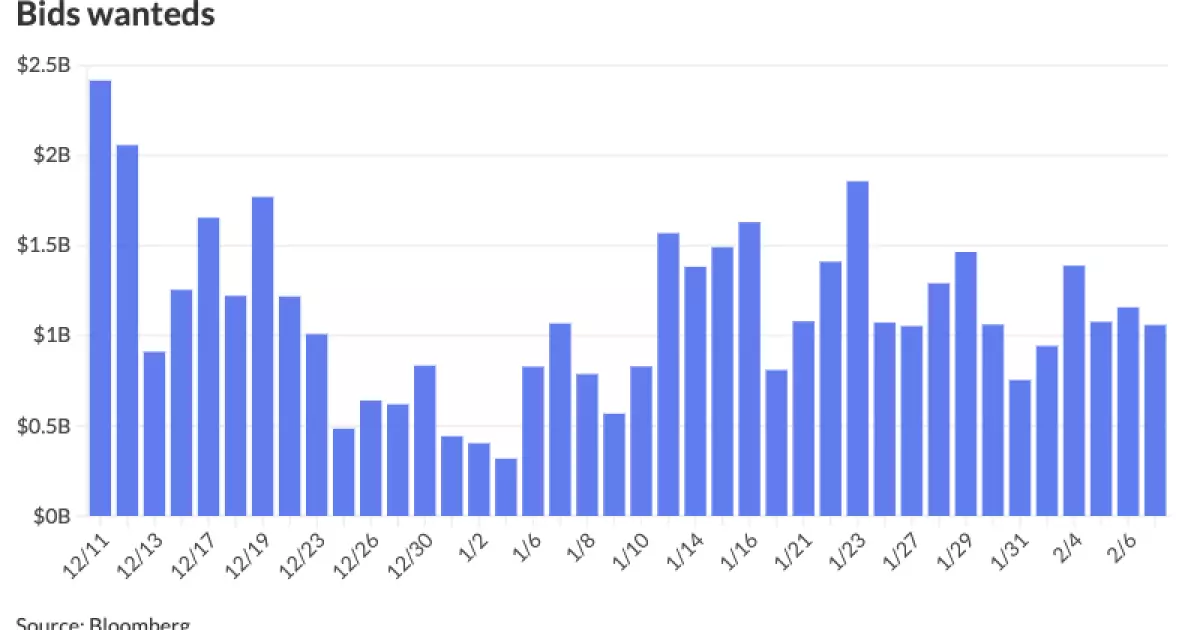The municipal bonds market has displayed remarkable resilience in the wake of economic fluctuations, setting the stage for a promising start to the year. As analysts and investors navigate through varying economic conditions, the recent market trends suggest a revitalized interest in municipal bonds. Following a dismal performance in December, where the market recorded a decline of 1.46%, January has shown a different trajectory, with gains unfolding as participants regain confidence.
The municipal market’s recovery can be attributed to several factors. A significant contributor is the reduced economic volatility observed in recent weeks, which has spurred buying activity. Despite initial tepidness at the beginning of the week, the market experienced a discernible uptick in interest as the new issue calendar appeared manageable, and reinvestment cash remained robust. This shift in momentum is evidenced by a substantial increase in both purchaser and seller activity, as revealed by data from J.P. Morgan. Dealer sales rose by 26%, and bid-wanteds—indicators of desirability—climbed by 20%.
Investors appear increasingly attracted to municipal bonds as they seek safer investments with solid yield options. This renewed interest has encouraged more active participation in the market, contributing to a robust environment where capital flows are poised to increase further.
The current market scenario showcases a strategic shift towards long-duration and high-yield investments. Investors are capitalizing on the steepness of the municipal yield curve, which offers an attractive risk/reward profile compared to traditional U.S. Treasury securities. This strategic inclination has resulted in noteworthy inflows into long-term municipal mutual funds, amassing approximately $2.8 billion since the year started.
It’s essential to note that the composition of inflows also highlights a shift towards high-yield strategies, with nearly 40% of the flows channeling into these investments. The compression of credit spreads has fostered favorable conditions for municipal bonds, driving both performance and demand. Market participants are banking on the anticipated decline in interest rates, which will further enhance the attractiveness of municipal bonds, especially at the longer end of the yield curve.
Examining the municipal-to-U.S. Treasury (UST) ratios reveals a nuanced picture of market dynamics. The ratios across various maturities indicate a gradual “richening” of municipals relative to their UST counterparts, suggesting a growing preference among investors. As of the market’s recent readings, the two-year municipal-to-UST ratio was pegged at 61%, while the 30-year stood at 83%. The declining ratios in the two-to-10-year range—dipping around two percentage points since the start of 2024—further emphasize the increasing relative value and appeal of municipal securities.
While short-term ratios exhibit strength, it is essential to highlight the 30-year munis, which have experienced a nearly four percentage point depreciation relative to USTs since late 2024. This dynamic shows that long-duration bonds remain an enticing option in the current low-rate environment, inviting sophisticated investors seeking stability and reliable income streams.
As market activity peaks, numerous cities and states are gearing up for significant bond issuance. Notably, the New York City Transitional Finance Authority plans to price approximately $1.659 billion in future-tax-secured subordinate bonds. This issuance not only signals the city’s ongoing funding requirements but also reflects broader trends where municipalities are capitalizing on favorable market conditions to tap into investor appetite.
States like Hawaii and Ohio are following suit with substantial bond offerings, designed to support infrastructure, education, and essential services. As these plans materialize, they are expected to generate excitement among bond investors, potentially further increasing demand across the municipal bond space.
Looking ahead, the municipal bonds market is poised for a continued rally. With waning economic volatility, strategic shifts towards long-duration and high-yield strategies, and a positive inflow of capital, investors can expect favorable conditions in the coming months. However, vigilance remains essential, as ongoing economic developments will influence market sentiments and ultimately shape future performance.
As municipalities prepare for multiple bond issues and investors recalibrate their strategies, the emphasis on stability and reliable income will be vital in navigating the evolving landscape. The municipal bonds market’s ability to adapt and respond to economic conditions not only highlights its resilience but also reinforces its critical role in portfolio allocation strategies. As we move through 2025, municipal bonds remain an attractive avenue for achieving favorable returns amidst uncertainty.


Leave a Reply